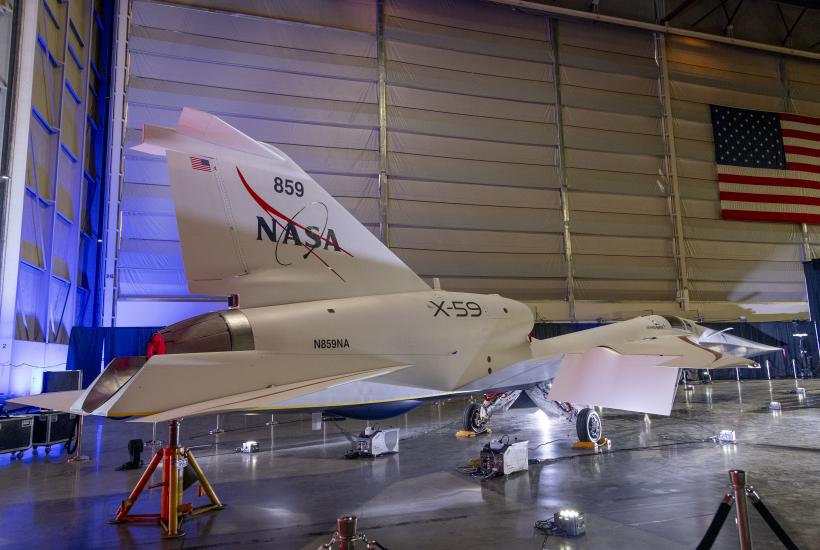The United States is taking bold steps in aviation innovation with ongoing tests of the experimental X-59 supersonic aircraft.
Experts suggest that its capabilities could present a serious strategic challenge for rival powers like Russia and China, potentially reshaping global military planning, according to the National Security Journal.
X-59’s Capabilities and Potential Advantages
The X-59, developed in collaboration between NASA and Lockheed Martin, can cruise at Mach 1.4 while keeping noise levels remarkably low.
Analyst Chris Osborne explains that the aircraft could transport troops, armored vehicles, and ammunition at twice the speed of conventional methods.
This rapid transport capability could shorten expeditionary operations and enable fast maneuvers across large territories in future conflicts.
While current fourth- and fifth-generation fighters can reach supersonic speeds, commercial and military supersonic transport has been limited by the disruptive sonic boom.
NASA hopes that successful testing of the X-59’s low-noise technology could pave the way for lifting bans on supersonic flight over populated areas.
Osborne notes that if this technology proves viable, the U.S. Air Force could adopt it to fundamentally change battlefield tactics.
Milestone First Flight Completed
At the end of October, the X-59 completed its first test flight near Lockheed Martin’s Palmdale facility.
The flight went smoothly, marking a major milestone for the QueSST program, which unveiled the aircraft in early 2024.
The X-59’s defining feature is its ability to fly faster than sound without generating a loud sonic boom, an innovation that could transform both military operations and future commercial supersonic travel.
Other Supersonic Aircraft Developments
Private aerospace companies have also long pursued supersonic flight.
Spike Aerospace announced a project in 2014 but never presented a working prototype.
Aerion Corporation had been developing a supersonic jet since 2004, but the project was canceled in 2021 due to financial difficulties.
In contrast, progress continued in 2025 when Boom Supersonic’s XB-1 technology demonstrator broke the supersonic barrier for the first time, reaching Mach 1.122.
The XB-1 is a precursor to Boom’s Overture aircraft, designed to cruise at Mach 1.7 and achieve a maximum speed of Mach 2.2, signaling a new era for faster-than-sound travel.
A Glimpse Into the Future
With the X-59 and private supersonic projects pushing the limits of speed and stealth, both military and commercial aviation could see dramatic transformations in the years ahead.
From rapid troop deployment to potential passenger travel at unprecedented speeds, supersonic technology is poised to redefine what’s possible in the skies.
Share on Facebook «||» Share on Twitter «||» Share on Reddit «||» Share on LinkedIn
